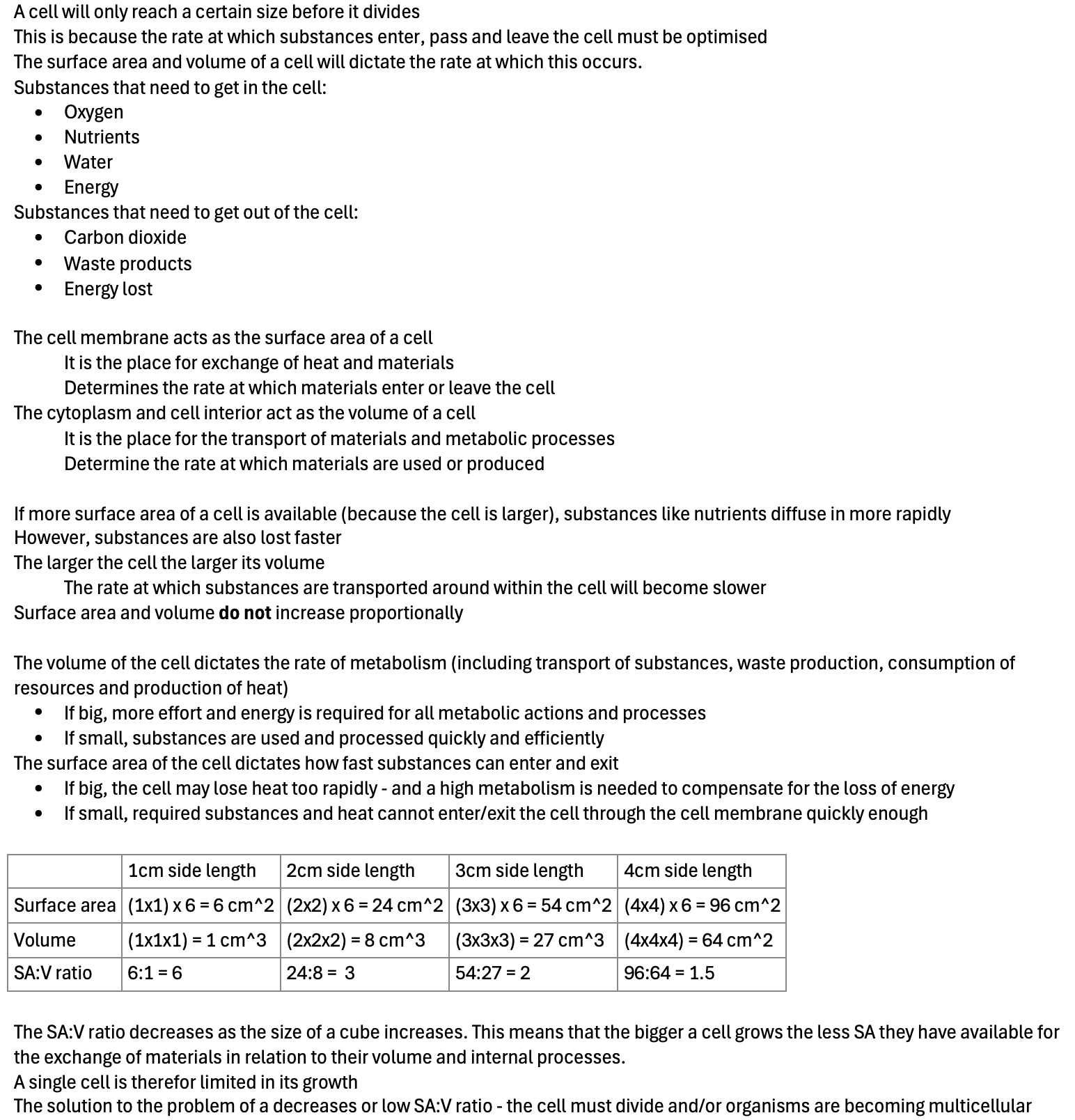Limits to Cell Size
A cell will only reach a certain size before it divides
This is because the rate at which substances enter, pass and leave the cell must be optimised
The surface area and volume of a cell will dictate the rate at which this occurs.
Substances that need to get in the cell:
Oxygen
Nutrients
Water
Energy
Substances that need to get out of the cell:
Carbon dioxide
Waste products
Energy lost
The cell membrane acts as the surface area of a cell
It is the place for exchange of heat and materials
Determines the rate at which materials enter or leave the cell
The cytoplasm and cell interior act as the volume of a cell
It is the place for the transport of materials and metabolic processes
Determine the rate at which materials are used or produced
If more surface area of a cell is available (because the cell is larger), substances like nutrients diffuse in more rapidly
However, substances are also lost faster
The larger the cell the larger its volume
The rate at which substances are transported around within the cell will become slower
Surface area and volume do not increase proportionally
The volume of the cell dictates the rate of metabolism (including transport of substances, waste production, consumption of resources and production of heat)
If big, more effort and energy is required for all metabolic actions and processes
If small, substances are used and processed quickly and efficiently
The surface area of the cell dictates how fast substances can enter and exit
If big, the cell may lose heat too rapidly - and a high metabolism is needed to compensate for the loss of energy
If small, required substances and heat cannot enter/exit the cell through the cell membrane quickly enough
| 1cm side length | 2cm side length | 3cm side length | 4cm side length |
Surface area | (1x1) x 6 = 6 cm^2 | (2x2) x 6 = 24 cm^2 | (3x3) x 6 = 54 cm^2 | (4x4) x 6 = 96 cm^2 |
Volume | (1x1x1) = 1 cm^3 | (2x2x2) = 8 cm^3 | (3x3x3) = 27 cm^3 | (4x4x4) = 64 cm^2 |
SA:V ratio | 6:1 = 6 | 24:8 = 3 | 54:27 = 2 | 96:64 = 1.5 |
The SA:V ratio decreases as the size of a cube increases. This means that the bigger a cell grows the less SA they have available for the exchange of materials in relation to their volume and internal processes.
A single cell is therefor limited in its growth
The solution to the problem of a decreases or low SA:V ratio - the cell must divide and/or organisms are becoming multicellular
